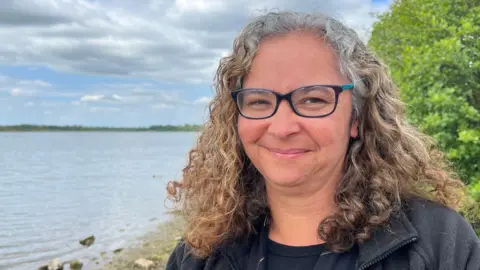Volunteers repel invaders at town freshwater lake
 BBC
BBCVolunteers are being urged to take part in efforts to restore Yorkshire's largest freshwater lake.
Hornsea Mere is a Site of Special Scientific Interest, but environmentalists say pollution and invasive species have taken a toll on the beauty spot, which is one of the region's most important wildlife habitats.
Now, the Groundwork Yorkshire charity has been awarded money from the government's Water Restoration Fund to create a plan to deal with the problems.
As part of the work, it is asking people to help map invasive species, such as Himalayan balsam, around the shores of the mere.
Luke Ball, who is working on the project, said: "We are going to train people up in identifying them and eventually we'll have groups going out and actually removing the invasive species and making sure that the natural species can thrive."

Hornsea Mere was carved by a glacier in the last Ice Age.
It sits in a huge dip in the landscape and some 12,000 acres of rural and urban land drains into it.
Identifying where pollution is running from and working out how to prevent it is a big part of the project.
Helen Ball, who also works for the charity, said it was the "most perfect location for wildlife" but "has so many challenges".
"The water is receiving all the pollutants and all the issues from the surrounding catchment, even down to washing our cars with shampoo on the driveway," she said.
"It's ultimately going to feed straight down into the mere."
Groundwork Yorkshire said it was working alongside the trustees of the Wassand Hall estate – which includes the mere.
Further funding would be sought to put the completed plan into action.
Anyone interested in getting involved is asked to contact Groundwork Yorkshire.
